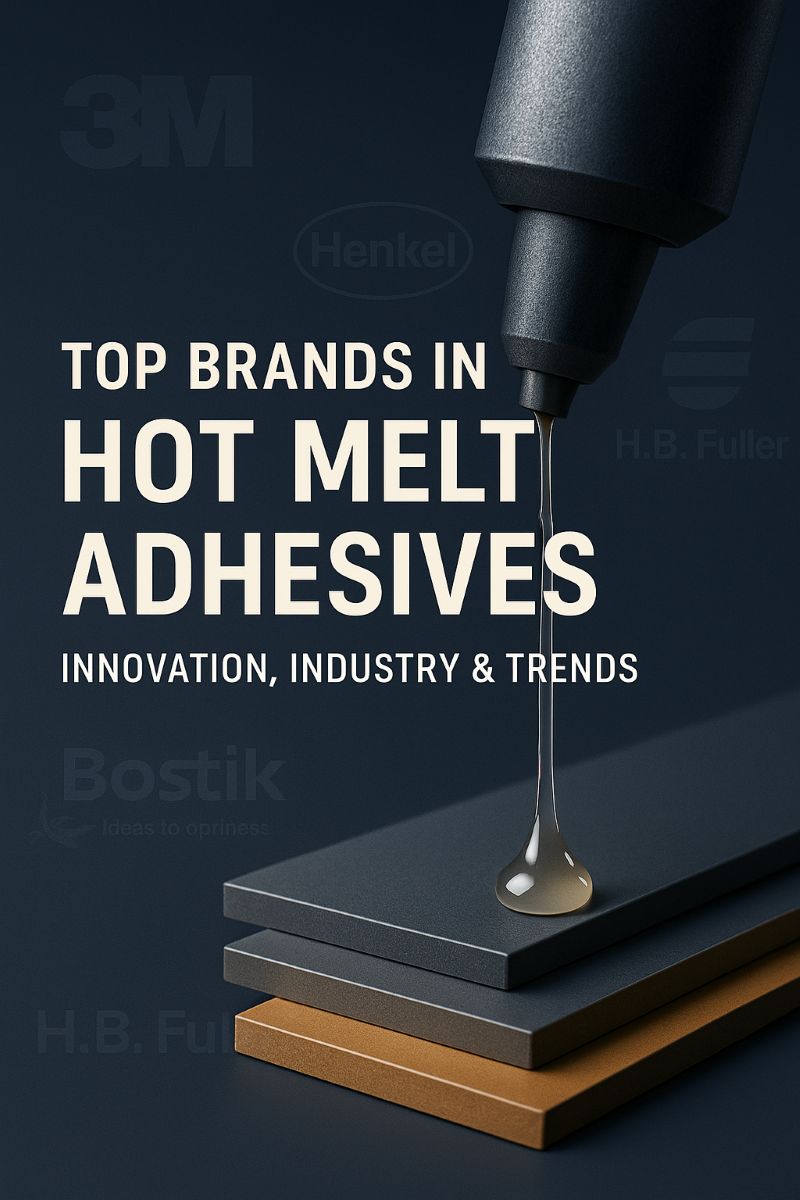
Market Leaders in Adhesives
Defining Hot Melt Adhesives
Types of Hot Melt Adhesives
Game-Changing Techniques
Role in Industrial Applications
Emerging Trends in Adhesives
Strategic Innovation Directions
Frequently Asked Questions (FAQ)
The global hot melt adhesive sector continues to evolve, driven by major players known for innovation, sustainability, and manufacturing efficiency.
One long-established leader offers a versatile range of adhesives for packaging, electronics, and mobility applications.
Another company has made strides in sustainable development by introducing adhesives formulated with eco-conscious materials.
A third manufacturer is known for delivering strong, high-performance bonds suited for demanding environments.
Other providers focus on simplified operations and user-centric application systems.
A fast-growing adhesive supplier is gaining recognition for its automated-line compatibility, clean application, and value-driven offerings in areas such as small electronics, labeling, and packaging.
These companies shape global production efficiency and set new standards in industrial adhesive solutions.
Hot melt adhesives are solid thermoplastic materials that melt upon heating and solidify quickly when applied, creating durable bonds across a range of substrates. Their quick-set behavior eliminates the need for curing and enables high-speed manufacturing.
Modern formulations provide:
Stability under varied temperature and environmental conditions
Cleaner finishes with low odor
Enhanced flow for precision in automation
These features make them ideal for use in electronics, packaging, consumer goods, and industrial assembly.
There are multiple hot melt adhesive types, each engineered for specific uses:
EVA-based adhesives: Known for affordability and flexibility, commonly used in packaging and publishing.
Polyolefin-based adhesives: Offer strong heat and chemical resistance, suitable for automotive and structural applications.
Polyamide-based adhesives: Designed for high performance under thermal and environmental stress, especially in electronics.
Some next-generation EVA formulations now provide improved clarity, fast setting, and smooth dispensing to meet the needs of fully automated production lines. These innovations are helping manufacturers meet international standards with better cost and energy efficiency.
Adhesive technology is being reshaped by a wave of transformative developments:
Adaptive adhesives now support multiple use cases with fewer formulation changes
Eco-friendly thermoplastic systems are helping reduce the environmental footprint of assembly operations
Low-viscosity formulations minimize energy use and speed up dispensing
Advanced bonding materials now offer better adhesion in extreme conditions
These advances support manufacturers looking to reduce cycle times, cut waste, and enhance line efficiency.
Hot melt adhesives play a critical role in modern industry, supporting:
Rapid assembly and throughput in packaging lines
Durable adhesion in electronic modules and appliances
Clean, repeatable bonding in labeling and paper conversion
Enhanced production control through automation-compatible properties
As a result, manufacturers across sectors rely on high-quality hot melt adhesives to meet productivity, quality, and sustainability goals.
Key developments shaping the hot melt adhesive industry in 2025 include:
Sustainable chemistry: Use of low-VOC and biodegradable components
Automated production compatibility: Adhesives optimized for robotics and high-speed systems
Flexible logistics: Shorter lead times and scalable supply models
Smart application: Precision dispensing and low-residue performance
These trends reflect the growing demand for smarter, cleaner, and faster adhesive technologies across global industries.
Innovation in adhesive manufacturing is focused on:
Multi-purpose solutions adaptable across sectors
Lower-temperature bonding to reduce energy consumption
Customizable formulations to meet specific performance requirements
Scalable products tailored for high-speed, global manufacturing systems
Enhanced technical service and support to reduce downtime and improve adoption
These strategies enable manufacturers to respond quickly to market demands and remain competitive in a fast-changing industrial landscape.
Q: What are hot melt adhesives?
A: Thermoplastic bonding agents that melt during application and solidify on cooling, enabling fast and secure bonds.
Q: What types of hot melt adhesives are commonly used?
A: EVA, polyolefin, and polyamide types are frequently used across packaging, automotive, electronics, and textiles.
Q: What makes next-generation hot melt adhesives effective?
A: Their fast setting time, clean application, compatibility with automation, and low odor contribute to production efficiency.
Q: Why are these adhesives important to manufacturers?
A: They reduce production time, improve quality, and support sustainability initiatives.
Q: What sustainability trends are driving development?
A: Key trends include carbon footprint reduction, recyclable-friendly formulas, and solvent-free chemistries.
Q: What are common industrial applications for hot melt adhesives?
A: Packaging, appliance assembly, electronics, woodworking, and labeling are typical applications.
Q: How do adhesives perform in high-stress conditions?
A: High-performance formulations offer strong adhesion even under elevated temperatures or humidity.
Q: What kind of support is available for industrial users?
A: Many adhesive providers offer customizable solutions, responsive technical support, and flexible logistics models.